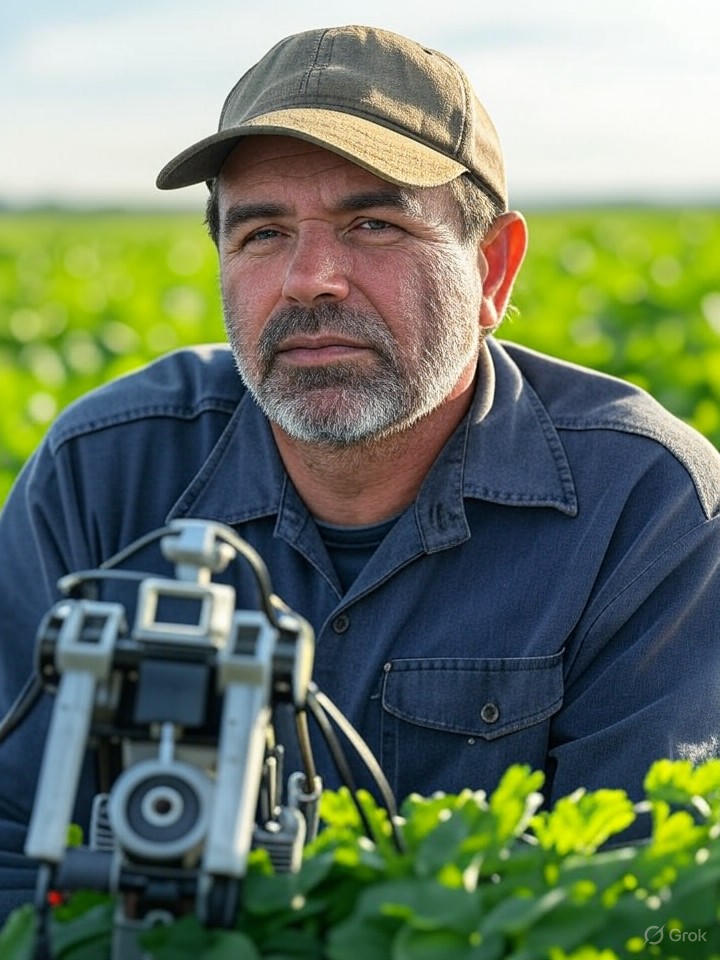In a quiet revolution sweeping across California’s fertile Central Valley, advanced AI farming and agricultural robotics are rapidly transforming traditional agricultural practices. Driven by the urgent need to address pervasive labor shortages and significantly boost crop yields, farmers are increasingly integrating sophisticated automated systems into their operations. This shift is not merely an incremental change but a fundamental redefinition of how food is produced, promising a more efficient and sustainable agriculture landscape.
These cutting-edge technologies are primarily deployed for highly precise tasks that demand unwavering consistency and accuracy. From intricate precision farming techniques like automated weeding and meticulous crop monitoring to optimized irrigation and targeted pesticide application, the capabilities of these machines are expanding. The immediate impact is a marked improvement in resource utilization, leading to less waste and healthier crops, which are vital for enhancing overall farm productivity and profitability.
Despite their undeniable advantages, these intelligent systems still face inherent limitations in fully replicating the nuanced intuitive judgment of human workers. However, where human dexterity might be unmatched, the robots excel in relentless endurance and unerring consistency, operating around the clock without fatigue. This steadfast performance is particularly invaluable in regions grappling with significant labor deficits, allowing for continuous cultivation and monitoring cycles that were previously unattainable.
The sector anticipates explosive growth, with market analyses forecasting substantial expansion in the AI farming and agricultural robotics domains by 2025. Emerging trends include the widespread application of drones for data collection and analysis, alongside sophisticated robotic harvesting solutions. Companies like Ecorobotix are at the forefront, developing ultra-precise AI robots capable of targeting individual weeds, promising massive reductions in herbicide use and critical preservation of soil health.
Nevertheless, significant barriers to widespread adoption persist, particularly for smallholder farmers who produce a substantial portion of the world’s food. High initial investment costs and the imperative for specialized technical expertise present formidable challenges. Yet, for many, these robotic innovations offer a crucial lifeline against ecological degradation, particularly given the alarming rates of soil erosion caused by conventional chemical overuse, underscoring the pressing need for more sustainable agriculture practices.
Further enhancing their utility, these autonomous farm technologies are increasingly integrated with companion systems like the Internet of Things (IoT) and blockchain. This synergy allows for unprecedented levels of precision, enabling functions such as robotic fruit pickers that utilize infrared sensors to accurately assess ripeness, minimizing waste. Beyond field operations, AI-powered solutions also extend to support systems, exemplified by initiatives like India’s ‘Kisan e-Mitra’ AI chatbot, assisting farmers with essential information.
While the debate continues regarding potential job displacement versus the creation of new roles in data analysis and machine maintenance, the overall trajectory points towards an indispensable role for AI and robotics in securing the Global Food Supply. Ethical considerations, such as data privacy, remain paramount, yet the eco-friendly innovations and enhanced efficiencies underscore their evolving capabilities. Ultimately, these advanced food technology solutions are not mere substitutes for human labor, but essential partners in cultivating a resilient and productive agricultural future for a rapidly growing world population.






Leave a Reply